Student Blog
Classes

“‘Enough’ is a feast” — On Cultivating Gratitude ⟩
November 30, 2015, by Ariel
Classes Life Hacks
Seeing as Thanksgiving just passed, I feel this is the perfect opportunity to talk about gratitude. A lot of us have been hearing about gratitude since we were kids. It’s the kind of thing our parents always reminded us to have when we didn’t want to eat our vegetables: “You should be grateful for these vegetables — there are starving children in _(fill in third world country here)_ who have nothing at all!”
Parental chiding aside, it’s amazing how the concept of being grateful — and our relationship to it — can change so much over time. My family participates in the common Thanksgiving tradition of going around the table and reflecting on what we are grateful for. As a kid, I usually said something along the lines of being happy I had finally gotten a Tamagotchi (’90s kids, remember those?) or maybe that I had earned an “A-” on my (dreaded) algebra test.
But this year, as I sat at my grandmother’s dining table full of food, friends, and family, I realized that as the years have churned on, the things I’ve found myself truly thankful for have become simpler and simpler: the ability to breathe, to see, to hear, to read . . . the capacity to love deeply, fail astoundingly, and the ability to let myself lean into vulnerability in the truest sense.
And while I am happy that I get to pursue my chosen career at one of the finest institutions in the country (Fight On!), and wake up every morning in a comfortable bed knowing I have food in my refrigerator for breakfast, I realized something a little more “meta” this year: I am most grateful for our ability as humans to cultivate gratitude itself (grateful for gratitude, if you will). If we couldn’t, where would we be?
In our course this semester entitled “Health Promotion and Wellness,” we’ve been talking a lot about gratitude and its role in happiness and mental well-being. Cultivating gratitude is a scientifically-backed concept that we as occupational therapists can use with our patients. We learned how doing so has been proven time and again to enhance subjective and psychological well-being.
. . . Speaking of which, have I mentioned how lucky I feel to have stumbled upon occupational therapy? Finding a career that will allow me to go home every single day knowing I’ve made some kind of an impact, whether large or small, is one of the coolest things I could possibly have imagined doing with my life.
And with that, I will leave you with a quote, written by Helen Keller, which my professors included in their final lecture.
I wondered how it was possible to walk for an hour through the woods and see nothing of note. I who cannot see find hundreds of things: the delicate symmetry of a leaf, the smooth skin of a silver birch, the rough, shaggy bark of a pine. I who am blind can give one hint to those who see: use your eyes as if tomorrow you will have been stricken blind. Hear the music of voices, the songs of a bird, the mighty strains of an orchestra as if you would be stricken deaf tomorrow. Touch each object as if tomorrow your tactile sense would fail. Smell the perfume of flowers, taste with relish each morsel, as if tomorrow you could never taste or smell again. Make the most of every sense. Glory in all the facets and pleasures and beauty which the world reveals to you.
— Helen Keller
⋯
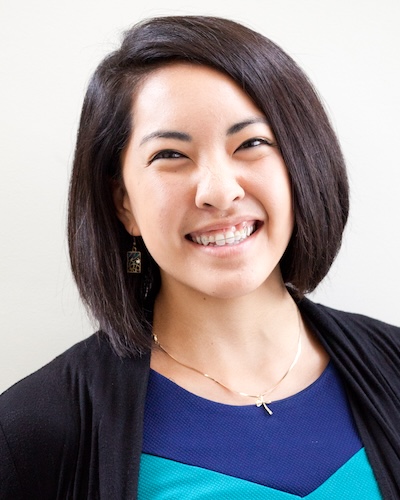
Wheelchair Mobility Creating Real Accessibility ⟩
November 22, 2015, by Rashelle
Classes What are OS/OT?
As an occupational therapist, we may have the opportunity to order wheelchairs for people after completing a thorough evaluation of them. When deciding what type of wheelchair to order, we analyze a person’s engagement in activities, current abilities, and desires for mobility. We also provide education to clients on how to best utilize their wheelchair in order to maximize their participation in daily activities (e.g., home and community mobility). Last week, we were fortunate enough to receive a lesson from an expert wheel chair maneuverer.
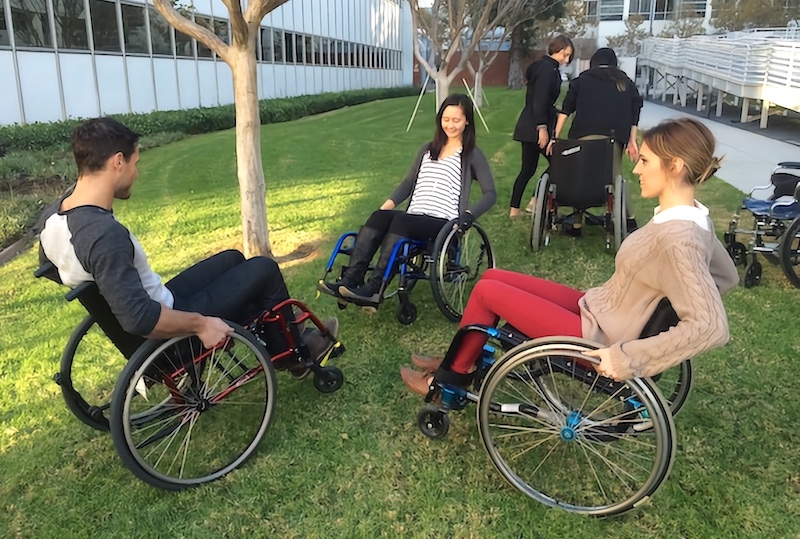
He taught us how to pop epic “wheelies” to get over road bumps, how to conserve energy while going up ramps, and how to courageously (yet safely!) back up over curbs.
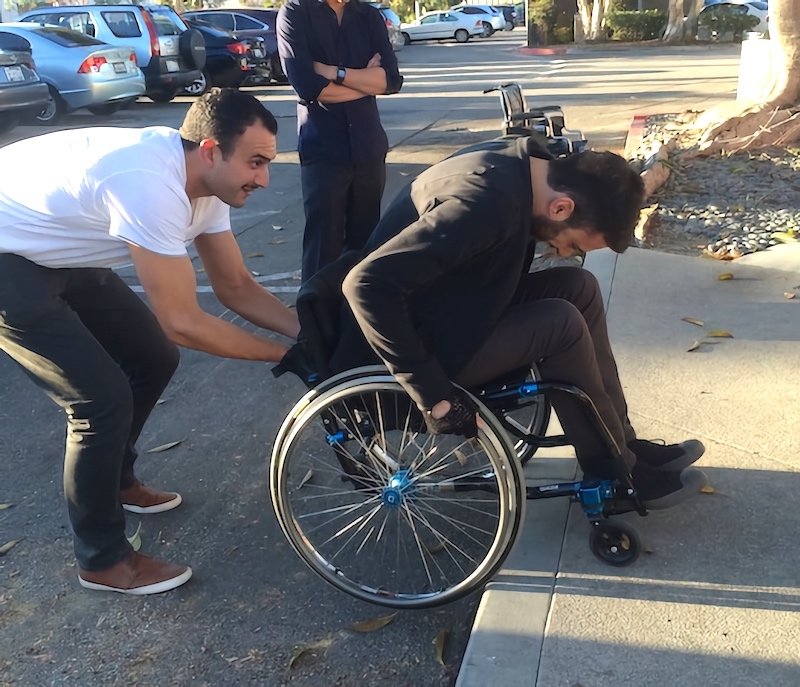
These lessons not only taught me basic techniques, but also the immensity of strength needed, both physically and mentally, to successfully overcome barriers of accessibility. It was inspiring to say the least, to hear about our guest speaker’s involvement in a nationally competitive wheelchair rugby team, living perfectly on his own, and even driving himself away in his inconspicuous, yet highly adapted car. The individuals that are able to master wheelchair mobility, in order to live independently and happily, are the true superstars of society!
⋯

Adaptation Elation: Equipment Creation! ⟩
November 11, 2015, by Ariel
Classes What are OS/OT?
As an occupational therapist to-be, I’m always keeping my eyes peeled for cool products that will help my future patients live their lives to the fullest.
Today in class, we had the opportunity to not only learn about adaptive equipment, but also try our hands at designing our very own product! As part of our lesson, we were given an “adaptive equipment challenge,” a la Iron Chef, where we were told to use the materials given to us (cardboard, duct tape, foam pipes . . . creativity) to create a piece of adaptive equipment. My team made a prototype for an adaptive chair, called the ‘Astro Chair Unlimited.’ We designed it specifically to help support children who have difficulty sitting upright when otherwise unsupported. Our product includes a fully padded seat cushion to relieve pressure and keep kids comfortable, a fun customizable (space-themed!) design, and supports on each side intended to help the child stay seated in an upright position while at a tabletop. 3-2-1 . . . ENGAGE in meaningful activities!!!
Here’s a picture of our final creation:

Adaptive chair
Another group in my class chose to make an adaptive Catch Game. Here’s a photo of what they came up with:
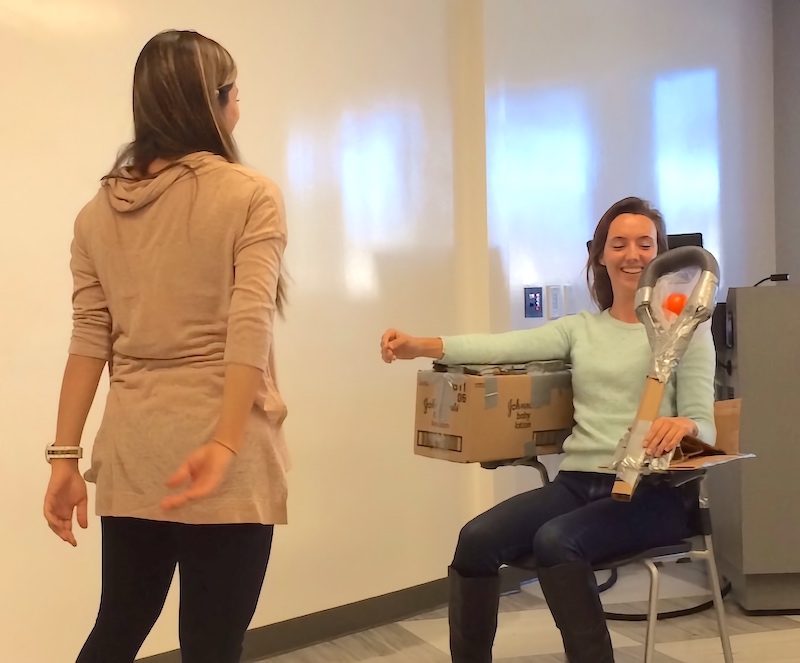
Catch Game
After prototyping our adaptive chair, I was interested in what else was out there for people with disabilities. Given what I found through my research, it seems like the possibilities are truly endless! Here are just a few of the ideas that struck my fancy.
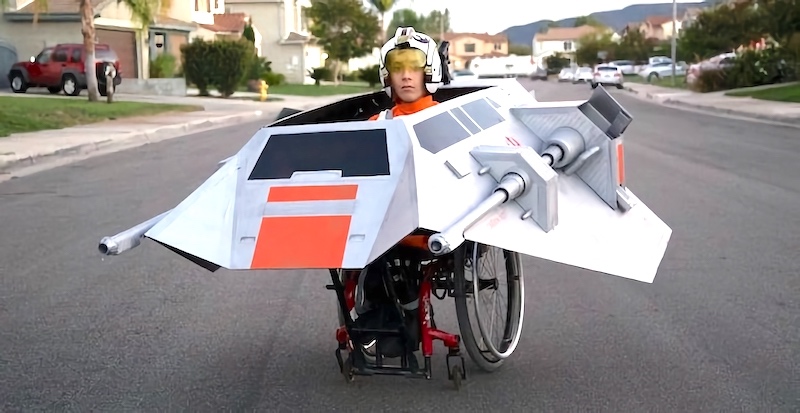
A “Star Wars” snowspeeder atop a child’s wheelchair, complete with flapping wings and working guns that shoot glowing Nerf darts

Shoes for children or adults with splints or AFOs

An adaptive croquet mallet
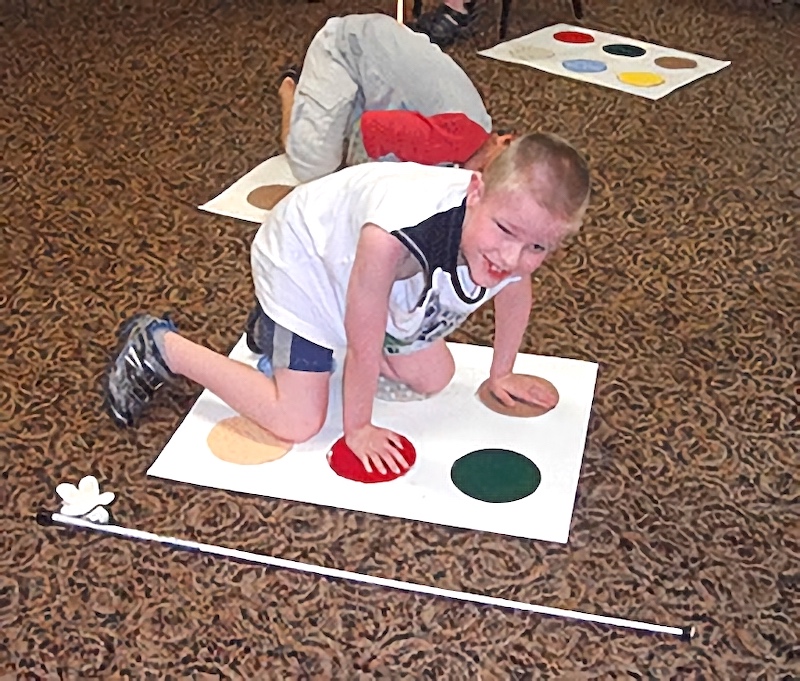
Braille Twister game
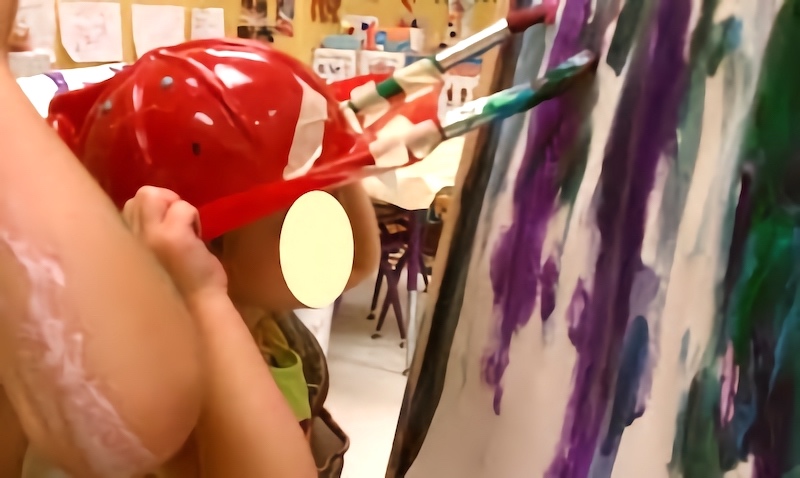
Painting with hats
These ideas, and the plethora of others out there, are such great sources of inspiration. As Maria Montessori put it, “Watching a child makes it obvious that the development of his mind comes through his movements.” We as occupational therapists have the pleasure of helping people in all walks of life — no matter what their abilities — become truly UNSTOPPABLE!
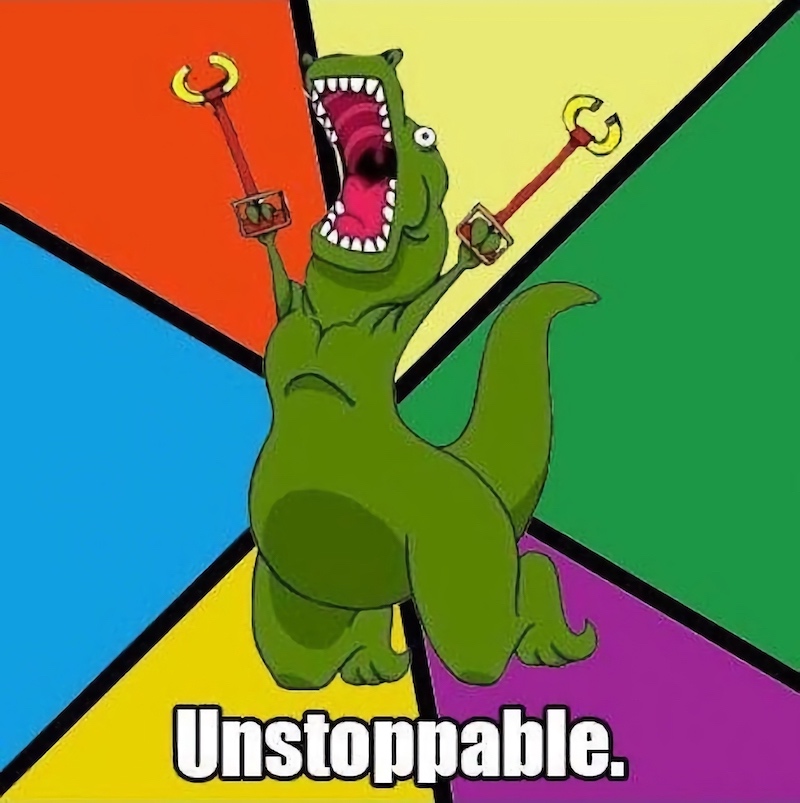
⋯

Learning How To Dress in OT School! ⟩
November 10, 2015, by Rashelle
Classes What are OS/OT?
In OT 502: Adult Physical Rehabilitation, we have a lab every week to learn practical skills that we can incorporate when treating patients — this week depicted below, focused on the activity of dressing.

Sock Aid and Dressing Sticks
The picture on the left demonstrates me using a sock aid! This assistive device is often utilized with adults, who have physical limitations that make dressing difficult. The sock aid can facilitate modified, independent dressing for people following surgeries to the hip, spine or legs, or for those who may live with chronic diseases such as arthritis, multiple sclerosis or Parkinson’s disease. Within that same lab, we learned about the benefits of dressing sticks, button hooks and reachers to assist with upper body dressing (as pictured on the right).
Additionally, in my level 1 fieldwork rotation, I learned how to dress a patient with compression bandages, in order to treat edema. Edema is a condition in which a person has a fluid buildup in a part of their body. By dressing patients with these bandages about once a week, the fluid can drain away from the swollen region.
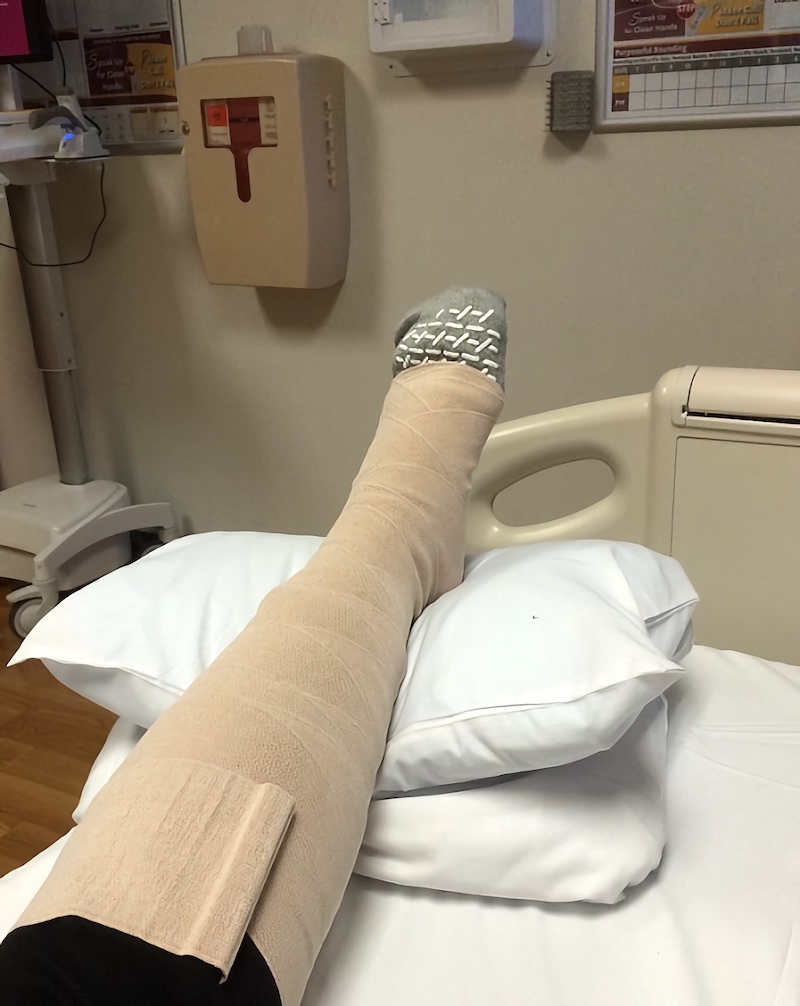
Edema Bandaging
(That’s my foot! I even got the real patient experience by having to lay in the hospital bed).
Furthermore, while you can learn these patient dressing techniques at most occupational therapy schools — USC also teaches students how to dress professionally and with school spirit!

Joe and Ellen Dressing Professionally
Here, Joe Ungco, a fellow student ambassador, and Ellen Wleklinski, an OTD resident are modeling their business attire, which we wear often for class presentations, fieldwork, conferences, meetings or interviews.

USC tailgate outfits
Finally, we FIGHT ON proudly with our traditional USC attire for football games, tailgates and other sporting events.
⋯

Getting Crafty with Neuro! ⟩
November 7, 2015, by Heather
Classes What are OS/OT?
In our first semester of the Entry-Level Master’s Program, we take a course called the Foundations of Neuroscience. For many students, it is one of their favorite classes. It is challenging, instructive and interesting. Not to mention, it is taught by Dr. Leah Stein Duker, who is incredibly talented, intelligent, and well respected within the Division and the entire field of Occupational Therapy.
As part of the course, we are provided the opportunity to get creative with a “neuro project” of our choosing. Many of the projects that my classmates chose to create depicted the functions of the various structures of the brain. To name a few: the neural pathways, the cortical homunculus of the primary motor cortex, and the innervations of the the central and peripheral nervous systems.

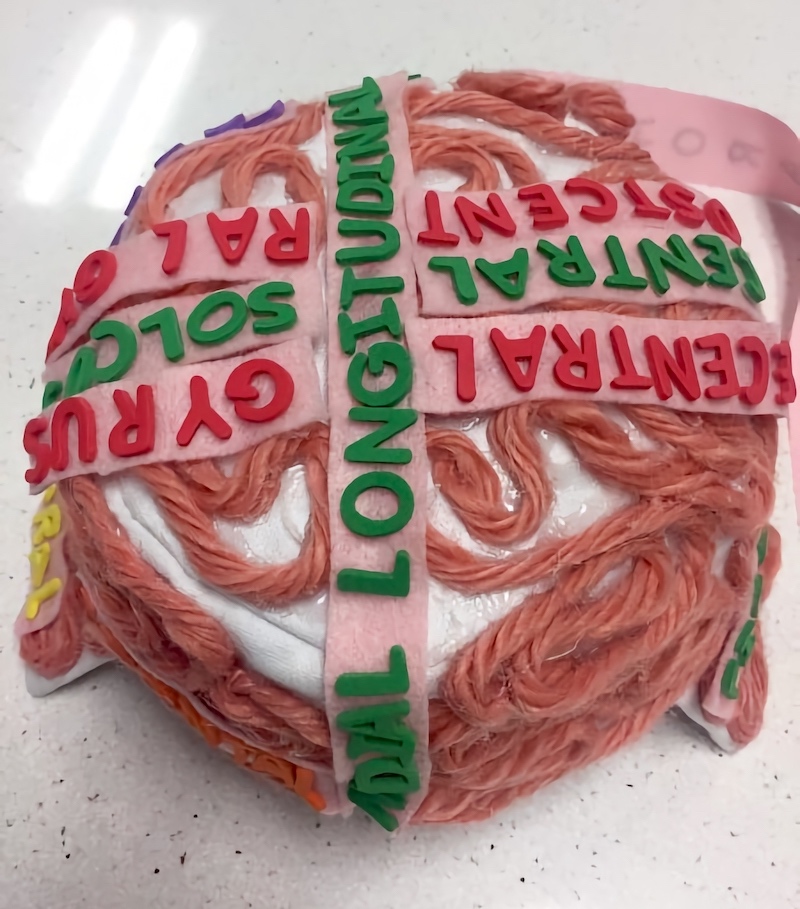
For my extra credit project, I created the peripheral nerve distribution of the hand as part of the brachial plexus. I did this project because I am interested in hand anatomy and the biomechanics of the upper extremity. Unfortunately, I do not have a picture of my project to share, however, I took a photo of another classmate’s project that did something similar by sewing the innervations of the hand together in glove form.
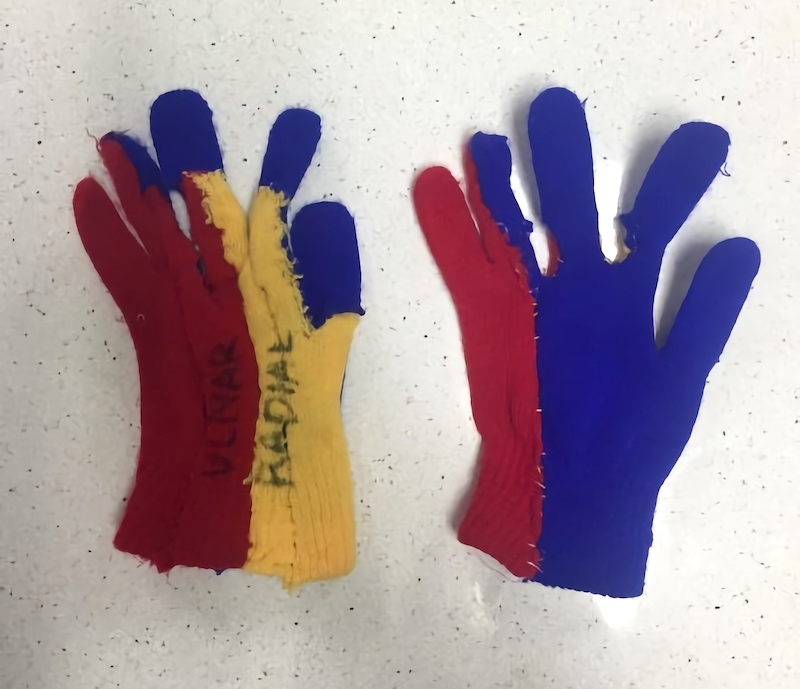
And just to get a little technical on you, the brachial plexus are formed from the junctions of the anterior rami from C5-T1. They innervate the entire upper limb. The nerves that I painted on the hand are the musculocutaneous nerve (green), the ulnar nerve (blue), the median nerve (yellow), and the radial nerve (red). Voila!
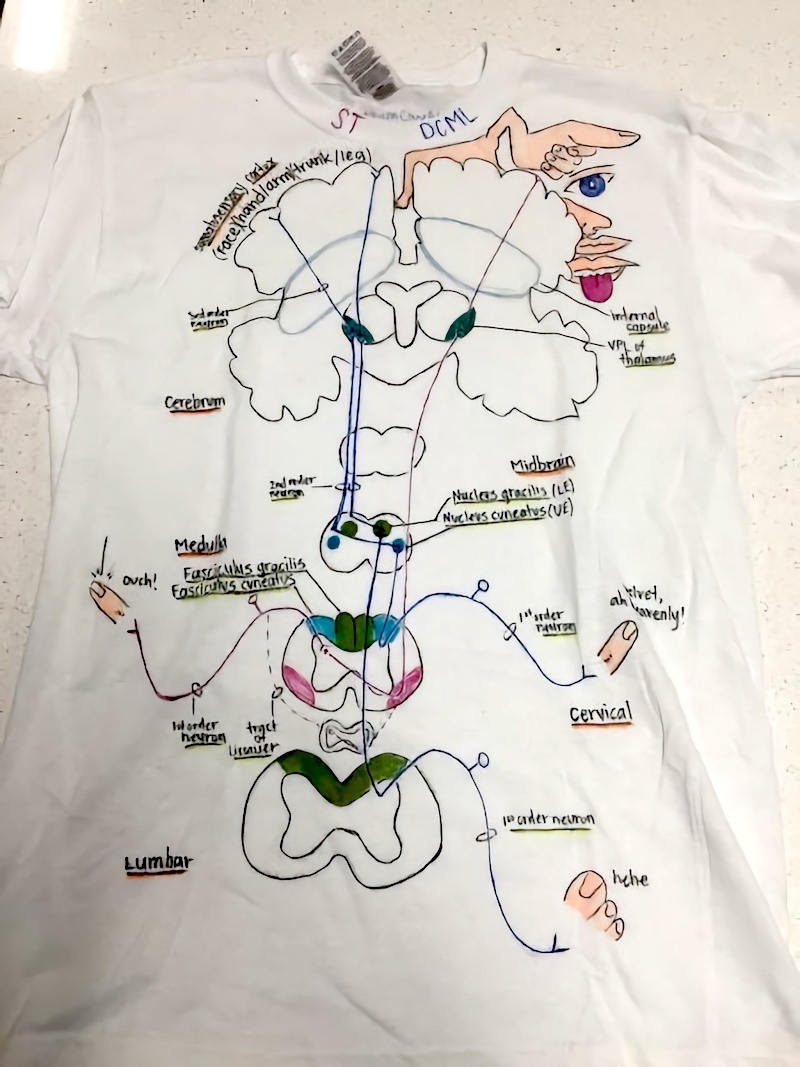

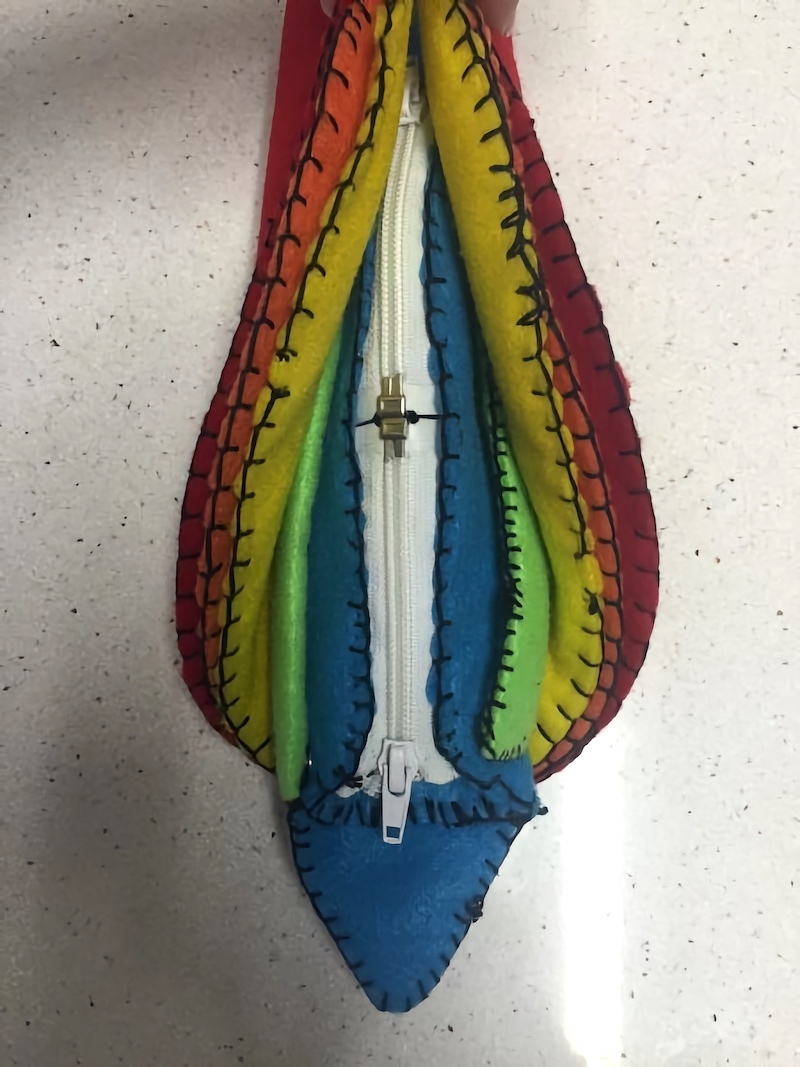
P.S. If anyone can tell me what this last project is supposed to be, comment and you will get a gold star!
⋯





